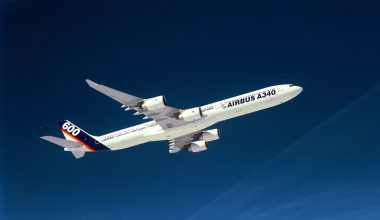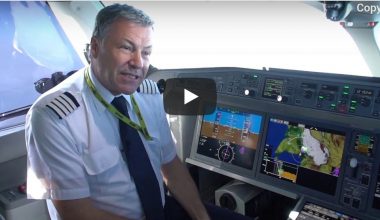Short Take-Off and Landing (STOL) aircraft are essential in Nepal. Being a country with high hills and mountains, traveling by road takes a maximum amount of time, so the better road travel alternatives are air travel as it is quicker and safer. Due to an uneven geographical structure at high altitudes of Nepal, there are no specific and open fields of building an airport with a long runway; therefore, the airport located in such a place has very short runways. These types of airports need STOL aircraft like DHC Twin Otter, Dornier Do 28, Cessna 208 Caravan, Let L-410 Turbolet, etc. Tara Air, Summit Air, Sita Airlines, and Nepal Airlines are currently operating at these airports.
Among the type of STOL aircraft, the de Havilland Canada Twin Otter is the best Short Takeoff and landing aircraft in Nepal for 50 years and has been running off runways in the Himalayas, bravely flying where no other airplane has dared to fly.
Read More
National Flag Carrier aim to add DHC 6 Twin Otter aircraft in its Fleet
Airliners in Nepal: Do you know about Yeti Airlines? (Photo Feature)

DHC-Twin Otter
The de Havilland Canada DHC-Twin Otter, currently marketed as the Viking Air DHC-6 Twin Otter, is a Canadian 19-passenger STOL utility aircraft developed by de Havilland Canada currently produced by Viking Air. The aircraft’s fixed tricycle undercarriage, STOL capabilities, twin turboprop engines, and high rate of climb have made it a successful public transport passenger airliner as well as a cargo and medical evacuation aircraft.

The production of the aircraft started in 1964, with the first flight on May 20, 1965. A twin-engine replacement for a single-engine DHC-3 Otter retaining the outstanding STOL qualities of DHC, Its design elements comprised double-slotted trailing flaps and ailerons, which function together with the flaps to improve STOL’s performance. The availability of the Pratt & Whitney Canada PT6A-20 turboprop 410 kW in the early 1960s made the concept of a twin more feasible.

In 1988, the production of all aircraft in Toronto ended with the completion of De Havilland Canada. After completing Series 300, the remaining tooling was purchased by Viking Air of Victoria, British Columbia, which manufactures spare parts for all out-of-production Havilland Canada aircraft. On February 24, 2006, Viking purchased the Bombardier Aerospace type certificate for all out-of-production Havilland Canada aircraft (DHC-1 through DHC-7). The ownership of the certificate gives Viking the exclusive right to manufacture new aircraft.
The aircraft remains the same, and it also carries 19 passengers. However, the latest DHC-6 400 Series has a complete glass cockpit with advanced avionics, a state-of-the-art Flight Control Device, and an Upgraded Land Proximity Alert System, whereas the older Twin Otters have analog dials. If it were not for its unusual overhead throttle control, the new Twin Otter Cockpit might have well been on an Airbus 320. The 400 Series also features more powerful PT6A-34 engines and 800 changes to enhance the existing models.
Twin Otter in Nepal
The DHC- Twin Otter made its first appearance in Nepal in 1971 as an alternative for the DC-3 Dakota, the workhorse of the then Royal Nepal Airlines Corporation. Successful Twin Otter was instrumental in opening up Nepal’s mountainous hinterlands and providing vital transportation to remote communities. Tara Air was the first private carrier to use the Viking Air Twin Otter aircraft in Nepal in 2010.
The national flag carrier’s domestic fleet is composed of 7 planes, including three vintage Twin Otters. During its heyday, NAC operated 18 aircraft where they used 12 Twin Otters, three Avros, and three Pilatus Porters—on domestic routes. Between 1972 and 1979, seven Twin Otters were donated by the Canadian International Development Agency to NAC.

As of now, Tara Airlines and Nepal Airlines are only the primary user of DHC Twin Otter and Viking Twin Otter with 4 and 3 aircraft, respectively. Among the 31 active airports in Nepal, there are 18 airports with a runway of less than 1000 m; for those airports, STOL aircraft are used, such as twin otters in Nepal. Since twin otters need only 366 m for takeoff and 320 m for landing, these aircraft are the best choices for these short runway airports, mostly situated at high elevations.
Accidents and Incident
Twin Otter has become a successful aircraft, serving in Nepal for about 50 years with a colorful history. As the aircraft is the longest surviving aircraft in Nepal’s aviation history, there are also some accidents and incidents where twin otters are engaged. This 50 years of service involved about 21 accidents and incidents involving Nepalese airlines such as Nepal Airlines, Tara Airlines, Yeti Airlines, Shangrila Air, and Skylines Airlines.
The first DHC-Twin Otter accident occurred on October 15, 1973; Royal Nepal Airlines De Havilland Canada DHC-6 Twin Otter 300 (9N-ABG) was damaged beyond repair at Lukla Airport; three crew members and three passengers were injured. Nevertheless, the first deadly accident occurred on December 22, 1984, when Royal Nepal Airlines De Havilland Canada DHC-6 Twin Otter 300 (9N-ABH) took off from Tumlingtar Airport Kathmandu Airport and crashed off course near Bhojpur, Nepal. It was reported that poor weather and a pilot error was the reason behind the accident. All three crew members were killed, and 12 of the 20 passengers were killed.
Twin Otter is also famous and renowned throughout the world due to their land on the short runway. As it could be used in water, clay, snow, and short runways, many countries use it. Since Nepal has more than 20 active and inactive airports with less than 1,000 m of runways and being the longest surviving STOL aircraft in Nepal, it is the evergreen STOL aircraft for Nepal.








